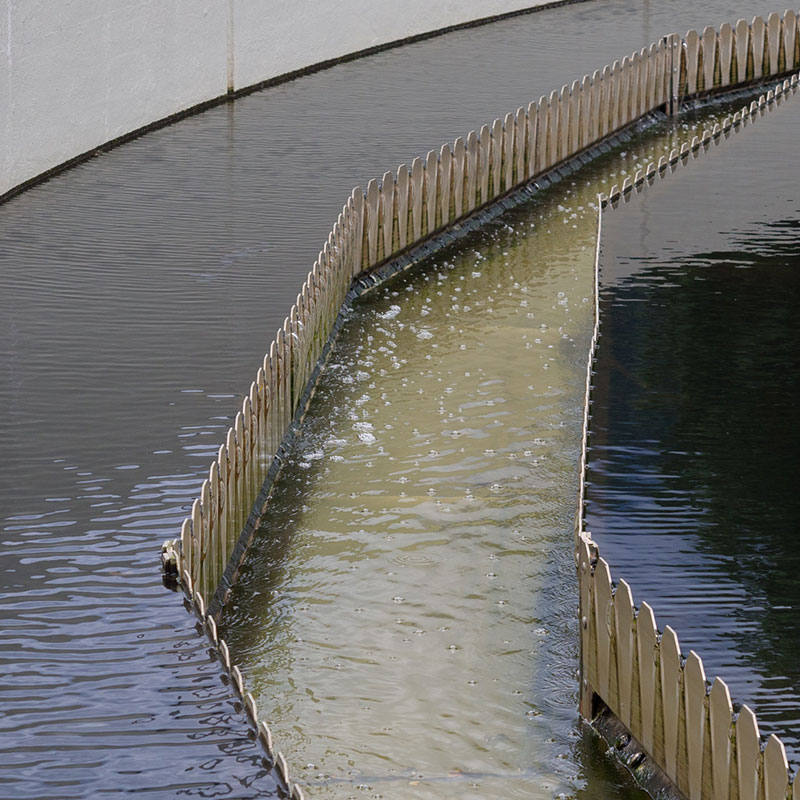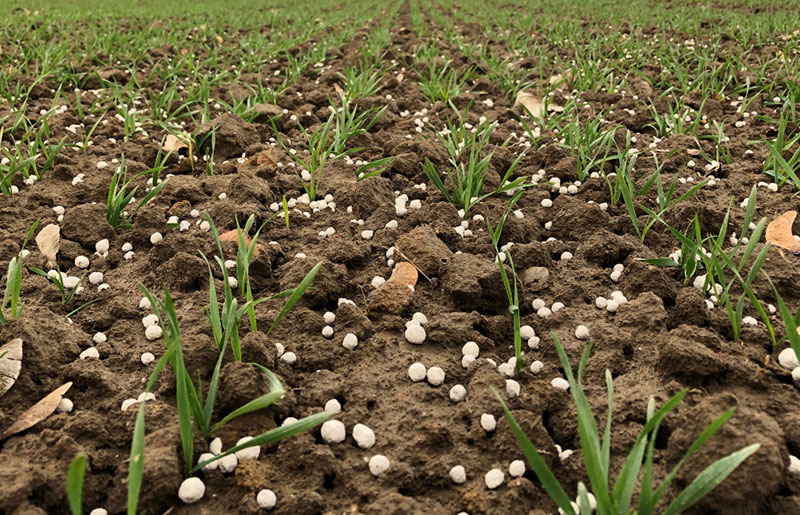
Direct desulphurisation
The addition of chalk granules in the desulfurization process at high temperatures (900 - 1,100°C) is state-of-the-art.
Step 1: Chalk is converted to calcium oxide with a high specific surface area at temperatures > 850°C
Step 2: The actual reaction with sulfur dioxide (SO2) to form gypsum occurs.
The most environmentally friendly coal combustion occurs in the fluidized bed.
At low combustion temperatures, NOx emissions are kept very low, and the direct addition of granulated chalk to the combustion process enables a technically simple and efficient desulfurization.
Our Fine Chalks:
Calciumcarbonat 5®
Calciumcarbonat 15®
Calciumcarbonat 45®
Advantages of Chalk for Direct Desulfurization compared to Calcium Carbonates of older origin and chemicals:

- amorphous structure
- average particle diameter of 2.5 µm
- particle size distribution with residue-free up to 40 µm
- low moisture content of <0.5 %
- high porosity
- low reaction time for desulfurization and CaO formation
- high specific surface area of CaO
- low stoichiometry
- easy handling

Neutralization
Application of chalk in municipal sewage treatment plants and industrial wastewater treatment plants
In industrial production, acidic wastewater is often generated and needs to be neutralized. Neutralization can be achieved using various alkaline additives. An economical alternative is our finely ground chalk.
The use of finely ground chalk has been demonstrated to meet the requirements of operators in two chemical industry companies. Furthermore, chalk serves as an equivalent alternative to traditional neutralizing agents and has a positive impact on the downstream biological treatment stages.
Due to its high reactivity, fine chalk can quickly raise pH values to over 6. After biological treatment, pH values typically range between 7 and 7.5. The positive experiences from using chalk in municipal sewage treatment plants are also reflected in industrial applications.
Optical®
Nitrifloc® Active
Advantages of Chalk over traditional Neutralizing Agents:
- High reactivity and fast dissolution rate
- Easy and safe handling
- No risk of exceeding pH levels
- Ideal environment for biological treatment
- Reduction in operating costs
- No pipe encrustation
- No sedimentation
- Clear evidence from large-scale trials


Acid Capacity
Acid capacity plays a crucial role in preventing biological processes in wastewater treatment from being disrupted by low pH levels.
It is recommended to maintain a minimum acid capacity of 1.5 mmol/L, preferably 2 mmol/L, in the effluent of the biological treatment plant.
By adding 1 mmol/L of chalk (100 g/m³), an acid capacity of 2 mmol/L can be produced according to the equation: .
Optical 20®
It's worth mentioning as a suitable type from our product range. In addition to pH stabilization, chalk has other positive effects on the entire wastewater treatment process, such as:
- Sludge compaction
- Improved dewatering behavior
- Support for biological phosphorus removal
- Buffer system


Flue gas cleaning
For flue gas desulfurization in large combustion plants, we recommend the use of Reasorb 70®, Reasorb 80®, or filter cake.
Approximately 95% of combustion plants in Europe use lime products such as quicklime (CaO), hydrated lime (Ca(OH)2), or Calcium carbonate (CaCO3) as alkaline sorbents for desulfurization.
Our chalk-derived Calcium carbonate is state-of-the-art due to its high reactivity, helping to save on investment and operating costs.
Reasorb 70®
Reasorb 80®
Advantages of Our Chalk Products:
- Reduction of L/G ratio
- Increase in Desulfurization Efficiency (ESG)
- Low Stoichiometry
- Lower residual Calcium carbonate content in gypsum
- Improved dewatering properties of gypsum
- Enhancement of gypsum whiteness
- Reduction of COD content, decreased wastewater discharge
- Increased buffering capacity in washing system (elimination of, e.g., formic acid)


Flue Gas Cleaning - Fluoride Cascade Absorbers
Fluoride Cascade Absorbers are standard solutions for high hydrogen fluoride and low hydrogen chloride and sulfur oxide concentrations.
Flue gases flow through the cascade and the sorbent, absorbing pollutants. Saturated sorbents are collected in the system's funnel and discharged continuously or discontinuously. A peeling drum can enhance the efficiency of the system.
REASORB TAV 3 – 7 mm®
is a proven sorbent for cleaning in thermal processes of well-known pollutants such as sulfur dioxide (SOx), hydrogen chloride (HCl), and fluorine (F) in Fluoride Cascade Absorbers.
- Large surface area of 5 – 6 square meters per gram
- Mineralogical composition
- Chemical purity
- Stable particle size distribution
- Absorption capacity


Liming of Water Bodies
Lime is a proven and commonly used measure in fish ponds to counteract acidic substrates with low buffering capacity.
Finely ground chalk lime neutralizes geologically and seasonally induced acidic substrates, and activates and disinfects with sufficiently high lime doses.
Calcium is an essential mineral for bone formation in fish and plant plankton.
The pH value of pond systems should be between 6.5 and 8, and before liming, the pH value and SBV value should be checked.
This examination is typically offered by all agricultural research institutions of the federal states.
Available advisory bodies of the states should be consulted, especially during the initial application.
Chalk lime is available in packaging sizes of 25 kg and 50 kg, as well as bulk truckloads for large-scale consumers.

Chalk distribution with expert advice –
Experience and knowledge make the difference.









